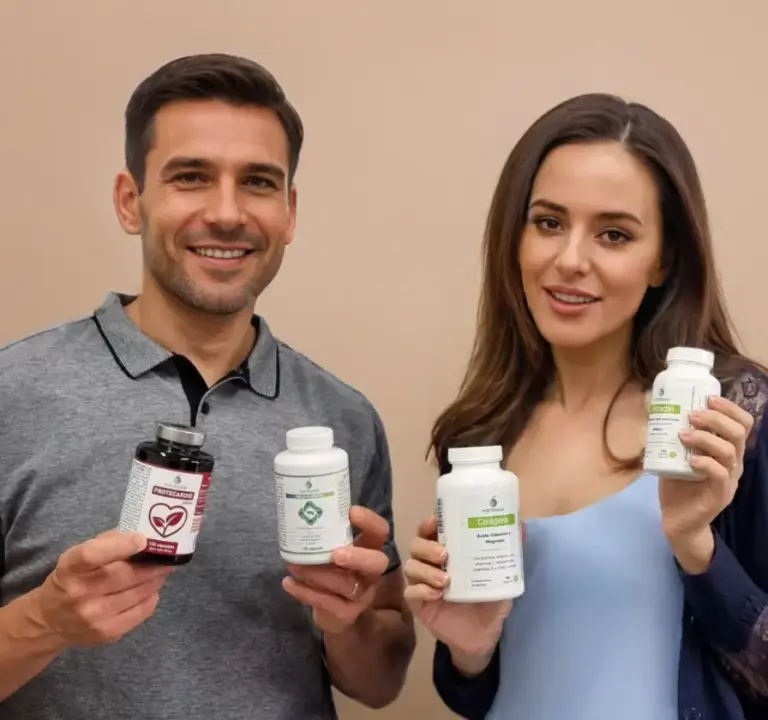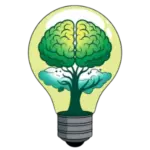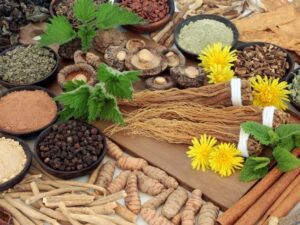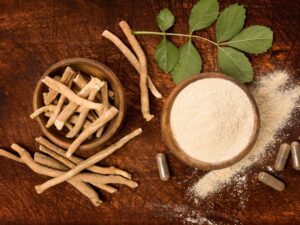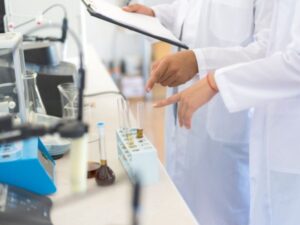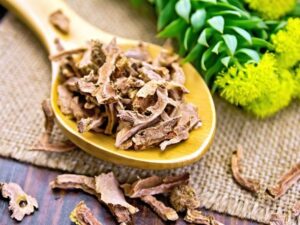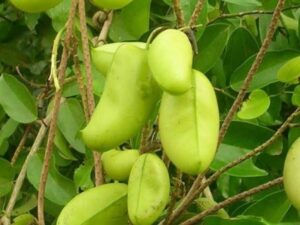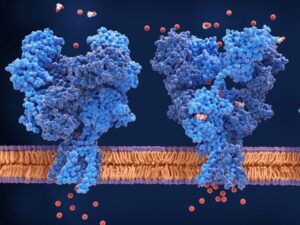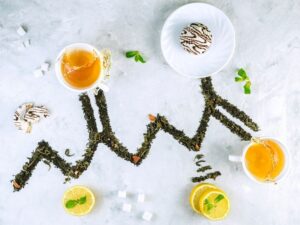In this article we will discuss the the benefits of DHA and phosphatidylserine supplementation in children and adults. DHA is especially important from the pre-pregnancy phase, until the first years of life of children. In addition, the latest studies indicate that supplementation with DHA and vegetable phosphatidylserine is beneficial for the cognitive development of adults, especially the elderly.
Solutions for better stress management
Stress is a natural reaction that is set in motion when a person perceives a complex situation, where they find themselves as being threatened or unprotected. [1]. In small episodes, stress can be positive, as it stimulates the body and allows it to reach its goal, returning to “normal” when the stimulus has stopped. However, when the stress situation is maintained for a long period of time, it can result in serious health problems, including insomnia, anxiety, depression, disturbances in concentration, irritability, gastrointestinal problems, musculoskeletal disorders, cardiovascular diseases, fibromyalgia or fatigue. chronic, immune system disorders and cancer [2].
When faced with a stressful situation, the body develops a series of physiological reactions that involve the activation of the hypothalamic-pituitary-adrenal axis and the autonomic nervous system [3]. The hypothalamic-pituitary-adrenal axis is one of the main stress response pathways. The hypothalamus releases corticotropin releasing factor (CRF), a hormone that causes the pituitary gland to release another hormone, adrenocorticotropic hormone (ACTH). ACTH is carried through the blood to the adrenal glands, which secrete the hormones adrenaline, norepinephrine, and cortisol (or hydrocortisone).
Cortisol is commonly known as the stress hormone. Its main functions are to increase the amount of sugar in the blood, and also to suppress the immune system in order to save energy and help the metabolism of fats, proteins and carbohydrates. This may be very appropriate for a specific moment, but when we are under chronic stress, the level of cortisol in the blood is permanently high (chronic hypercortisolemia), leading to a generalized suppression of the immune system [4]. Excess cortisol stimulates the release of histamine, which explains why people tend to get sicker or suffer from herpes, eczema or allergies when they suffer from this phenomenon.
A widely used remedy for the treatment of severe stress and anxiety disorders are the psychoactive drugs based on benzodiazepines. These should be used rationally and under strict medical prescription, as they are very effective at the beginning, but dependence quickly develops [5], which would require an increase in the dose so that they continue to have the same effect.
In fact, there is currently a serious public health problem in Europe, related to the taking of benzodiazepines without medical supervision [6, 7], which worries the authorities, since addiction to this substance is difficult for therapeutic management.
In addition, you have to be very careful if you decide to stop taking the drug without proper medical attention, as there are serious risks that this could cause the withdrawal syndrome, which translates into: anxiety, panic attacks, hyperventilation, tremors, sleep disturbances, muscle spasms, anorexia, weight loss, visual disturbances, sweating, dysphoria, hypersensitivity to noise, seizures, hallucinations, and even delusions. For this reason, it is essential for the quality of life of the patient to find alternatives with less potential to develop dependence and induce adverse reactions. In this sense, there has been great interest from the scientific community in the study of medicinal plants [8].
Some plants, known as adaptogens, show promise in managing stress and anxiety. This term was used for the first time in 1947 by the scientist Nicolai Lazarev to identify “a pharmacological substance capable of inducing in an organism a state of nonspecific increased resistance that allows counteracting stress signals and adapting to an exceptional effort”.[9] Later, in 1969, scientists Israel Brekhman and Igor V. Dardymov [10] defined the general characteristics needed to consider a substance as adaptogenic. In general, an adaptogenic substance is capable of nonspecifically improving the symptoms of stress, helping the body to adapt to the circumstances that may cause it, improving physical and mental performance, without destabilizing bodily functions. Examples of plants considered by the scientific community as adaptogens are Ashwagandha (Withania somnífera (L.) Dulal), rhodiola (Rhodiola rosea L.), Korean ginseng (Panax ginseng CA Mey) and bacopa (Bacopa monnieri (L.) Wettst).
Other plants have a more specific action on the central nervous system. A classic example is the griffonia (Griffonia simplicifolia (DC.) Baill.), whose seeds are abundant in the amino acid L-5-hydroxytryptophan (5-HTP), the precursor of serotonin, a neurotransmitter hormone responsible for regulating the state of mind [11]. 5-HTP helps reduce anxiety and promotes both a relaxed mental attitude and better sleep.
Another substance, also with a specific function on the central nervous system, is L-theanine, an amino acid present in green tea leaves (Camellia sinensis (L.) Kuntze). L-theanine increases the levels of GABA (gamma-aminobutyric acid), as well as serotonin and dopamine in the brain [12]. These neurotransmitters are responsible for the regulation of emotions and mood.
Aware of the need to offer safe alternatives to help people prevent the consequences of stress in the day to day, Nutribiolite has developed APTOZEN, a food supplement that combines the concentrated extracts of ashwagandha, rhodiola and griffonia, with the amino acid L- theanine. Each of these ingredients has been shown, in different scientific works, to have properties that increase the body’s resistance to chronic stress, and help promote biological processes associated with relaxation and improved mood [13-18].
Ashwagandha and Rhodiola rosea
Ashwagandha, Sanskrit name for bufera (Withania somnifera (L.) Dunal), is one of the most widely described medicinal plants in the Ayurvedic Pharmacopoeia (traditional Indian medicine). It is a shrub that grows mainly in India, Pakistan and Sri Lanka. Its use originates from the Ayurvedic tradition where it is classified as “Rasayana” one of the most important branches of Ayurveda, indicated to tone the body and mind and well known in the West as an adaptogenic plant [18, 19]. Another plant well known for its reputation as an adaptogen is Rhodiola (Rhodiola rosea L.) [15, 20]. This plant is native to cold regions of the planet, which is why it is also known as Polar Rose.
Several scientific studies, both in animals and in humans, have verified a relationship between the consumption of Ashwagandha and Rodiola and an improvement in symptoms associated with stress and anxiety [21-23]. Animal studies have the advantage of simulating well-controlled chronic stress situations and analyzing the consequences for both the behavior and the health of all the animals studied. For example, in 2003 in the scientific Journal of Pharmacology, Biochemistry and Behavior, conducted with rats subjected to chronic stress for 21 days, researchers verified that mice that consumed an extract of ashwagandha root were less likely to develop side effects such as hyperglycemia , glucose intolerance, increased plasma corticosterone levels *, gastric ulcerations, sexual dysfunction, cognitive deficits, immunosuppression, and mental depression [24]. In another animal-controlled chronic stress study, blood levels of various biochemical stress markers were monitored, specifically the stress-activated protein kinases p-SAPK, p-JNK, nitric oxide, and cortisol. In the animals that received placebo, the levels of these markers were significantly elevated, whereas in the animals that received a rhodiola extract (1 mg / kg for 7 days) these markers remained practically unchanged [25].
* Corticosterone is the main adrenal corticosteroid in laboratory rodents, whereas cortisol is the main endogenous adrenal steroid in most mammals, including humans [26].
Human clinical studies also lead to similar conclusions about the ability of ashwagandha and rhodiola to improve resistance to stress. These are usually based on the evaluation of standardized questionnaires and blood or urine tests to determine changes in parameters associated with stress. For example, in a double-blind, placebo-controlled randomized clinical trial (RCT) conducted with 50 athletic adults, of both sexes and aged between 20 and 45 years, the effect of supplementation in resistance to stress, with 300 mg of an extract of Ashwagandha root standardized to 5% withanolides, was studied. Half of the individuals received a capsule per day,containing the extract, while the other half received a capsule with placebo. The researchers observed that the individuals who received the supplementation with the ashwagandha extract, presented a significant improvement in the result of the test of the VO2 maximum (maximum volume of oxygen that the organism can process during an exercise) in comparison with the individuals who took the placebo (p <0.0001, which means a confidence interval> 99.99%). The evaluation of the Recovery and Stress Questionnaire for Athletes (RESTQ-Sport) yielded better results for the athletes who received the supplementation, especially with regard to recovery from fatigue (p <0.0001), lack of energy ( p <0.0001) and the analysis of physical condition (p <0.0001). Furthermore, none of the subjects in this study reported adverse effects [27].
In another double-blind, placebo-controlled RCT with 58 individuals with anxiety and stress disorders, the beneficial effect of a daily supplementation of 250 mg of an Ashwagandha root extract standardized to 5% withanolides was evaluated on the improvement of their symptoms. [19]. The group of individuals who received the supplementation showed a statistically significant reduction in stress levels, evaluated using the Perceived Stress Scale (PSS) (p <0.05; which means a confidence interval> 99.95%) and in the level of cortisol (p <0.05) in the blood, after only 8 weeks of treatment. A significant improvement in the sleep quality of the participants was also observed, which is also an important indicator of better stress management [19].
The recommended daily dose of APTOZEN (2 capsules / day) corresponds to a daily intake of 300 mg of Ashwagandha extract standardized to 5% withanolides.
In 2015, researchers at the University of Pennsylvania in the USA conducted a Phase II, placebo-controlled RCT with 57 participants to evaluate both the relative safety as well as the efficacy of rhodiola compared to an antidepressant drug, for the treatment of depression [28]. The results showed that Rhodiola, despite having less antidepressant activity than the drug, was better tolerated and had significantly fewer adverse effects. According to the researchers, although rhodiola is less effective, it could have a more favorable risk / benefit ratio for cases of mild or moderate depression.
Recently, on 2020 another RCT was published by researchers from the Institute of Psychology at the University of Lubeck in Germany, evaluating the effect of a supplement with 200 mg of a rhodiola extract standardized in 3% rosavins twice a day [29]. The participants in this study were 50 healthy volunteers aged between 30 and 50 years, who worked at the computer for 27-28 hours per week, and who reported symptoms of visual and mental fatigue due to work. The results of the study showed a higher performance in multitasking conditions during the course of the rhodiola extract administration, for 12 weeks. In general, rhodiola had a positive influence on attention and the allocation of mental resources and, therefore, on the speed and quality of performance under conditions of high cognitive demand.
The recommended daily dose of APTOZEN (2 capsules / day) corresponds to a daily intake of 200 mg of Rhodiola extract, standardized to 3% rosavins and 1% salidrosides.
According to some scientific works, the anti-stress effect of adaptogens is related to the regulation of the hypothalamic-pituitary-adrenal axis (which we mentioned at the beginning of this article), and the consequent normalization of the release of stress hormones, such as activated protein kinases p-SAPK and p-JNK, the enzyme nitric oxide synthetase (which catalyzes the conversion of L-arginine to L-citrulline producing nitric oxide) and cortisol [25, 30-33]. It is believed that in the case of ashwagandha this function is due to the presence of tetracyclic terpenoids such as withanolides [24, 34] and in rhodiola, a similar function would be carried out by aromatic compounds with structures similar to catecholamines and tyrosine, such as rosavins and salidrosides [33].
Griffonia: source of L-5-hydroxytryptophan
Another active ingredient present in APTOZEN‘s formula is Griffonia seed extract (Griffonia simplicifolia (DC.) Baill.). These seeds are rich in the amino acid L-5-hydroxytryptophan (5-HTP), also known as oxitriptan, which in our body participates in the synthesis of the neurotransmitter serotonin.
The existence of 5-HTP in nature is not only limited to mammals, such as humans, but is also produced by plants, fungi, and microbes. Griffonia seed is one of the richest plant sources of 5-HTP.
Serotonin in our body is obtained from another amino acid, L-tryptophan, present in some proteins in food. For a healthy person, without problems of chronic stress or other mental disorders, it will be sufficient to ensure that a healthy amount of protein is incorporated into their diet to maintain normal levels of serotonin. However, for people with mental disorders such as chronic stress and anxiety, serotonin levels are likely to be below normal [35]. In fact, stress, anxiety and other mental disorders such as depression, autism, insomnia, schizophrenia, hyperactivity, obsessive compulsive disorder and aggressiveness are clinically associated with a deficiency of serotonin in the body [11, 35].
It would be correct to think that in order to increase the serotonin levels in the body, supplementation with L-tryptophan would be just as effective as supplementation with 5-HTP. However, there are important differences that make 5-HTP supplementation much more efficient than that with L-tryptophan:
- The L-tryptophan obtained from the diet (proteins) is metabolized in the liver to produce niacin (vitamin B3) and to be a part of the proteins that make up the body’s tissues. Only a portion of the L-tryptophan taken with the diet will pass into plasma without being metabolized.
- 5-HTP is very well absorbed via oral intake, resisting well to the action of gastric juices and digestive enzymes. Approximately 70% of the 5-HTP ingested orally ends up in the bloodstream. Furthermore, the absorption of 5-HTP is not affected by the presence of other amino acids; therefore, it can be taken with meals without reducing its effectiveness. Unlike L-tryptophan, 5-HTP cannot be metabolized to give rise to niacin or to be part of the tissues.
- The transport of L-tryptophan across the blood-brain barrier (necessary to enter the brain and be converted to serotonin) requires binding to a transport molecule, which L-tryptophan has to compete with five other amino acids (tyrosine, phenylalanine , valine, leucine and isoleucine). Furthermore, L-tryptophan is present in food in relatively small amounts compared to these other amino acids. As little as 1% of the L-tryptophan in the diet can reach the central nervous system.
- 5-HTP easily crosses the blood-brain barrier, not requiring the presence of a carrier molecule.
- Stress, elevated cortisol levels, and vitamin B6 deficiency stimulate the conversion of L-tryptophan to kinurenic acid, reducing plasma L-tryptophan levels. In addition, high levels of kinurenic acid inhibit the transport of L-tryptophan to the central nervous system, reducing serotonin levels in the brain.
- Taking 5-HTP prevents the conversion of L-tryptophan to 5-HTP by the enzyme tryptophan hydroxylase, which is the important step that limits the rate of conversion of L-tryptophan to serotonin.
Since the 1970s, several clinical studies point to a direct relationship between the intake of 5-HTP and the improvement of symptoms of depression and anxiety [11]. In fact, 5-HTP is one of the most studied substances for this type of disorder, being used in high doses (greater than 100 mg / day) in drugs for the treatment of neurological syndromes associated with serotonin deficiency, such as depression. or epilepsy.
The recommended daily dose of APTOZEN (2 capsules / day) corresponds to a daily intake of 50 mg of 5-HTP.
Theanine and its relationship with GABA and glutamate
Glutamate and gamma-aminobutyric acid (GABA) are the main neurotransmitters and are, respectively, the main excitatory neurotransmitters of the mammalian central nervous system (CNS). The action of these two neurotransmitters in the CNS guarantees a balance between neuronal excitation and inhibition, which is essential for normal brain function. The imbalance between glutamate and GABA has been shown to be involved in many neurodegenerative diseases such as Alzheimer’s, Parkinson’s, Huntington’s, Tourette’s syndrome, delirium, depression, obsessive-compulsive disorder, and autism [36, 37].
The most widely used anxiolytic medications for the treatment of stress and anxiety symptoms are based on benzodiazepines (we talked about them at the beginning of this article). These drugs act on the central nervous system facilitating the action of GABA, favoring the inhibition of the activity of the neuronal circuits used in the response to stress. The problem with the use of this type of medication is its easy capacity to generate dependence, which is why its use is only recommended under medical supervision and in severe cases of chronic stress and anxiety [5].
L-theanine (gamma-glutamylethylamide) is one of the predominant amino acids in the tea plant (Camellia sinensis (L.) Kuntze) and is responsible for its calming properties [38]. This substance was isolated and identified for the first time in 1949 by the Japanese scientist Yajiro Sakato [39]. Its chemical structure is similar to that of glutamate, the excitatory neurotransmitter of the central nervous system, but its action in the central nervous system is precisely the opposite. Animal studies have shown that it works through several simultaneous mechanisms. Due to its similar chemical structure, theanine competes for the same receptor used by glutamate to enter the neuron. By blocking glutamate receptors, L-theanine indirectly supports GABA activity by releasing this transmitter to perform its CNS inhibitory function. Furthermore, studies in mice have verified that L-theanine increases the release of dopamine and serotonin in specific regions of the brain [12, 38]. In addition to its anti-stress properties, L-theanine also has benefits for the immune and vascular systems [40].
Each dose of APTOZEN provides 50 mg of pure L-Theanine. In this way, the relaxing properties of the tea leaf are obtained, without consuming caffeine, a substance is also present in the leaf, which produces an exciting effect.
It is worth highlighting a recent study carried out by researchers from the National Institute of Neuroscience in Tokyo (Japan), where the objective was to evaluate the beneficial effect of supplementation with L-theanine in healthy individuals. The objective is to evaluate the potential of this nutrient in the management and prevention of stress symptoms, and in the improvement of cognitive functions. This study (double-blind, placebo-controlled RCT) involved 30 healthy adults divided into 2 groups: the theanine supplementation group and the placebo group. After 4 weeks of study, standardized international questionnaires were administered to all participants. Scores on the assessment questionnaires for stress-related symptoms (depression, anxiety trait, and sleep) and cognitive functions (verbal fluency and executive function) were significantly better in the L-theanine supplementation group. In addition, the supplementation did not generate adverse effects in any of the participants. According to the researchers, these findings suggest that L-theanine produces a positive effect in promoting better mental health, acting in the prevention of cognitive deterioration and helping in the management of stress-related symptoms [41].
Based on these evidences, Nutribiolite has developed APTOZEN, a food supplement that combines the properties of these four ingredients (ashwagandha, rhodiola, the 5-HTP from griffonia and L-theanine) with the aim of helping to maintain physical capacities and in cases of weakness, exhaustion or fatigue, contributing to optimal relaxation and emotional balance [13-18]. APTOZEN is not recommended for children, pregnant or lactating women, or for people on antidepressant treatment.
- Piñeiro Fraga, M., Estrés y factores relacionados en el personal sanitario de hospitalización psiquiátrica: un estudio de prevalencia. Enfermería Global, 2013. 12: p. 125-150.
- Calleja, C., Estrés. Farmacia Profesional, 2007. 21(6): p. 52-57.
- Koenig, J., et al., Autonomic nervous system and hypothalamic-pituitary-adrenal axis response to experimentally induced cold pain in adolescent non-suicidal self-injury–study protocol. BMC psychiatry, 2015. 15: p. 150-150.
- Duval, F., F. González, and H. Rabia, Neurobiología del estrés. Revista chilena de neuro-psiquiatría, 2010. 48: p. 307-318.
- Hood, S.D., et al., Benzodiazepine dependence and its treatment with low dose flumazenil. British Journal of Clinical Pharmacology, 2014. 77(2): p. 285-294.
- El consumo de ansiolíticos en 2020 fue el más alto de la última década (elconfidencial.com).
- Utilización de medicamentos ansiolíticos e hipnóticos en España – Agencia Española de Medicamentos y Productos Sanitarios (aemps.gob.es).
- Carlini, E.A., Plants and the central nervous system. Pharmacology Biochemistry and Behavior, 2003. 75(3): p. 501-512.
- Lazarev, N.V., [General and specific effects of drugs]. Farmakol Toksikol, 1958. 21(3): p. 81-6.
- Brekhman, II and I.V. Dardymov, New substances of plant origin which increase nonspecific resistance. Annu Rev Pharmacol, 1969. 9: p. 419-30.
- Birdsall, T.C., 5-Hydroxytryptophan: a clinically-effective serotonin precursor. Altern Med Rev, 1998. 3(4): p. 271-80.
- Nathan, P.J., et al., The neuropharmacology of L-theanine(N-ethyl-L-glutamine): a possible neuroprotective and cognitive enhancing agent. Journal of Herbal Pharmacotherapy, 2006. 6(2): p. 21-30.
- Extracted from the EFSA health claims application list, under evaluation: ID 2446 – Griffonia simplicifolia (Griffonia) – Nervous system function.
- Extracted from the EFSA health claims application list, under evaluation: ID 2829 – Roseroot (Rhodiola rosea) – Physical performance and condition. Antioxidativity.
- Extracted from the EFSA health claims application list, under evaluation: ID 2659 – extract of rhodolia (Rhodiola rosea) – adaptogen, helps to stimulate nervous system.
- Extracted from the EFSA health claims application list, under evaluation: ID 3877 – Rhodiola rosea (Common Name : Rhodiola) – Cognitive and mental performance.
- Extracted from the EFSA health claims application list, under evaluation: ID 2183 – Withania somnifera (common name: Ashwagandha) – Mental Health and relaxation.
- Extracted from the EFSA health claims application list, under evaluation: ID 3251 – Ashwagandha root (Withania somnifera) – Adaptogenic properties.
- Salve, J., et al., Adaptogenic and Anxiolytic Effects of Ashwagandha Root Extract in Healthy Adults: A Double-blind, Randomized, Placebo-controlled Clinical Study. Cureus, 2019. 11(12): p. e6466-e6466.
- Ishaque, S., et al., Rhodiola rosea for physical and mental fatigue: a systematic review. BMC complementary and alternative medicine, 2012. 12: p. 70-70.
- Singh, N., et al., An overview on ashwagandha: a Rasayana (rejuvenator) of Ayurveda. African journal of traditional, complementary, and alternative medicines : AJTCAM, 2011. 8(5 Suppl): p. 208-213.
- Pratte, M.A., et al., An alternative treatment for anxiety: a systematic review of human trial results reported for the Ayurvedic herb ashwagandha (Withania somnifera). Journal of alternative and complementary medicine (New York, N.Y.), 2014. 20(12): p. 901-908.
- Anghelescu, I.G., et al., Stress management and the role of Rhodiola rosea: a review. Int J Psychiatry Clin Pract, 2018. 22(4): p. 242-252.
- Bhattacharya, S.K. and A.V. Muruganandam, Adaptogenic activity of Withania somnifera: an experimental study using a rat model of chronic stress. Pharmacology Biochemistry and Behavior, 2003. 75(3): p. 547-555.
- Panossian, A., et al., The adaptogens rhodiola and schizandra modify the response to immobilization stress in rabbits by suppressing the increase of phosphorylated stress-activated protein kinase, nitric oxide and cortisol. Drug Target Insights, 2007. 2: p. 39-54.
- Raff, H., CORT, Cort, B, Corticosterone, and now Cortistatin: Enough Already! Endocrinology, 2016. 157(9): p. 3307-3308.
- Choudhary, B., A. Shetty, and D.G. Langade, Efficacy of Ashwagandha (Withania somnifera [L.] Dunal) in improving cardiorespiratory endurance in healthy athletic adults. Ayu, 2015. 36(1): p. 63-68.
- Mao, J.J., et al., Rhodiola rosea versus sertraline for major depressive disorder: A randomized placebo-controlled trial. Phytomedicine, 2015. 22(3): p. 394-9.
- Koop, T., et al., Effects of a Rhodiola rosea extract on mental resource allocation and attention: An event-related potential dual task study. Phytotherapy Research, 2020. 34(12): p. 3287-3297.
- Panossian, A. and G. Wikman, Evidence-based efficacy of adaptogens in fatigue, and molecular mechanisms related to their stress-protective activity. Curr Clin Pharmacol, 2009. 4(3): p. 198-219.
- White, P.T., et al., Natural Withanolides in the Treatment of Chronic Diseases. Advances in experimental medicine and biology, 2016. 928: p. 329-373.
- Lopresti, A.L., et al., An investigation into the stress-relieving and pharmacological actions of an ashwagandha (Withania somnifera) extract: A randomized, double-blind, placebo-controlled study. Medicine, 2019. 98(37): p. e17186-e17186.
- Panossian, A., Understanding adaptogenic activity: specificity of the pharmacological action of adaptogens and other phytochemicals. Annals of the New York Academy of Sciences, 2017. 1401(1): p. 49-64.
- Bhattacharya, S.K., et al., Anxiolytic-antidepressant activity of Withania somnifera glycowithanolides: an experimental study. Phytomedicine, 2000. 7(6): p. 463-9.
- Lin, S.-H., L.-T. Lee, and Y.K. Yang, Serotonin and mental disorders: a concise review on molecular neuroimaging evidence. Clinical psychopharmacology and neuroscience : the official scientific journal of the Korean College of Neuropsychopharmacology, 2014. 12(3): p. 196-202.
- El-Ansary, A. and L. Al-Ayadhi, GABAergic/glutamatergic imbalance relative to excessive neuroinflammation in autism spectrum disorders. Journal of Neuroinflammation, 2014. 11(1): p. 189.
- Al-Otaish, H., et al., Relationship between absolute and relative ratios of glutamate, glutamine and GABA and severity of autism spectrum disorder. Metabolic Brain Disease, 2018. 33(3): p. 843-854.
- Juneja, L.R., et al., L-theanine—a unique amino acid of green tea and its relaxation effect in humans. Trends in Food Science & Technology, 1999. 10(6): p. 199-204.
- Sakato, Y., The Chemical Constituents of Tea: A New Amide Theanine. Journal of Agricultural and Food Chemistry, 1949. 23: p. 262-267.
- Williams, J., et al., l-Theanine as a Functional Food Additive: Its Role in Disease Prevention and Health Promotion. Beverages, 2016. 2(2): p. 13.
- Hidese, S., et al., Effects of L-Theanine Administration on Stress-Related Symptoms and Cognitive Functions in Healthy Adults: A Randomized Controlled Trial. Nutrients, 2019. 11(10): p. 2362.

